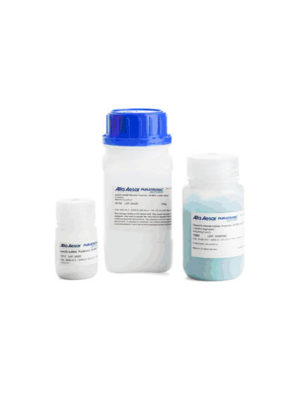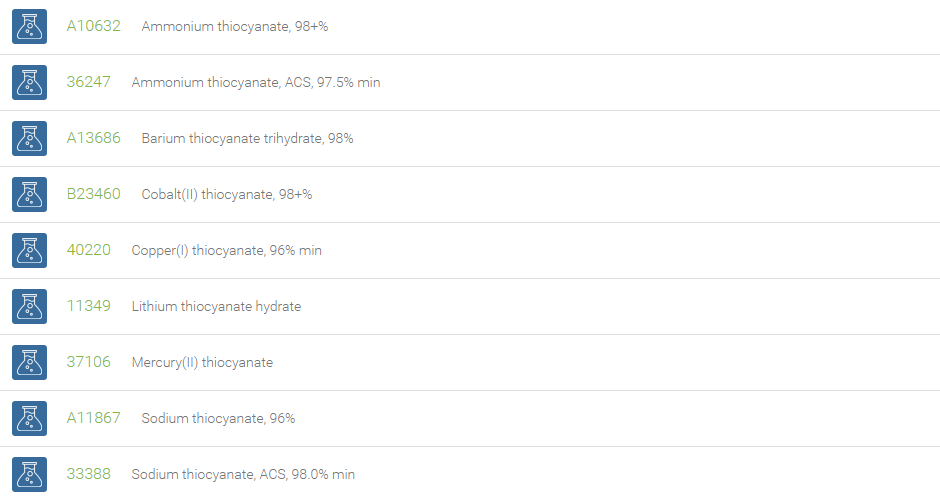Inorganic Thiocyanates

Inorganic Thiocyanates
Inorganic thiocyanate is also known as rhodanide. It is the anion (SCN)– and conjugate base of thiocyanic acid. Common derivatives include the colorless salts, such as potassium thiocyanate and sodium thiocyanate. Thiocyanates (SCN)– are resonance stabilized such that the sulfur or nitrogen can act as a nucleophile, a metal ligand, and serve as linkage isomers. It is an ambidentate ligand; (SCN)– can also bridge two (M-SCN-M) or even three metals. The Thiocyanate ion forms a complex with Fe3+ ions in solution, turning the solution into a blood red color.
Thiocyanate has the property of being a competitive inhibitor of the thyroid sodium-iodide symporter. It is used as a precursor for the synthesis of pharmaceuticals and other specialty chemicals. For example, it is employed to convert alkyl halides into the corresponding alkyl thiocyanates. It can act as a chaotropicagent, hence it can be used as a destaining agent. The chemical industry uses the thiocyante reagent to produce photographs and textiles.


